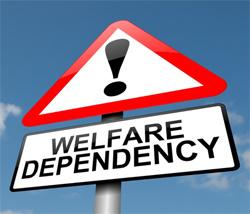The Paycheck Protection Program: Paying People Not To Work?
Authored by Robert Aro via The Mises Institute,
The stimulus packages being handed out across this world provide us with an opportunity to document the anticapitalist process as it unfolds in real time, keeping in mind that when these inflation schemes fail, it will likely be blamed on capitalism.
My previous article discussed the $600 billion Main Street Lending Program (MSLP), which is very different from and not to be confused with the $670 billion Paycheck Protection Program (PPP). Whereas the MSLP grants between $1 million and $150 million in the form of a secured loan, the PPP only provides the lesser of $10 million and 250 percent of a borrower’s average monthly payroll costs. However, what is more concerning than the amount of the loans are the terms of the “loans.” Per the US Small Business Administration (SBA):
The loan will be fully forgiven if the funds are used for payroll costs, interest on mortgages, rent, and utilities (due to likely high subscription, at least 75% of the forgiven amount must have been used for payroll).
In what may go down in history as one of the most aptly named loan programs ever, the “Paycheck Protection Program,” appears to be living up to its moniker; but is it a “real loan” or a loan in name only? Even worse, nowhere does it say that employees must work in order to receive the money. Rather, the SBA goes on to mention that “forgiveness is based on the employer maintaining or quickly rehiring employees and maintaining salary levels.” Thus, not only does it make sense for the entrepreneur to maintain all staff, but the entrepreneur is also incentivized to maintain existing salary amounts as well, regardless of whether the employee works or not.
A recent Washington Post article said it best, citing a legal opinion to explain that
“the company can still choose to use PPP funds to pay that employee, even if the employee is not actually performing real work.”
But that doesn’t mean the loan is designed to pay people “not to work.”
The question to consider is: should society be paying people not to work? If yes, then where should this money come from? For this program, the money will be created via deposit institutions that will provide the loans to businesses. Those deposit institutions will then be able to borrow from the Fed’s newly created Paycheck Protection Program Lending Facility (PPPLF) and exchange the PPP loan as collateral, guaranteed by the SBA.
It may seem strange that the Fed would take on a loan when that loan may be forgiven upon the debtor spending the money on payroll, but in the 31-page “Federal Register Notice: Capital Rule: Paycheck Protection Program Lending Facility and Paycheck Protection Program” it is noted that:
As a general matter, SBA guarantees are backed by the full faith and credit of the U.S. Government.
A government guarantee makes good economic sense to the Fed, which concludes in a report to Congres that:
PPP loans under the PPP are fully guaranteed as to principal and interest by the SBA, and these guaranteed loans will fully collateralize extensions of credit under the PPPLF. As a result, the Board does not expect that the PPPLF will result in losses to the Federal Reserve.
On April 16, 2020 at 9 a.m. the Fed’s loan facility opened, and at noon on the same day the SBA had already made 1,661,367 approvals. Only time will tell how much of this money will be paid back, but there seems to be little reason for anyone to offer to pay it back.
The combination of increasing the money supply in order to pay people not to produce goods or services has consequences that not a lot of people are talking about.
It flies in the face of the free market and is as nonsensical as a negative interest rate. A loan that is forgivable is unconventional to say the least, because a loan is normally defined as an amount borrowed that is expected to be paid back with interest. When a loan is given on a first-come-first-served basis for the purpose of paying people not to work and is forgivable because it’s guaranteed by the United States government, we shouldn’t call it a loan.
It may be called socialism, maybe interventionism, and some may still prefer the term statism; but one thing is certain when it comes to the Paycheck Protection Program: it’s not capitalism!
Tyler Durden
Wed, 04/29/2020 – 17:25
via ZeroHedge News https://ift.tt/3bOAqb7 Tyler Durden
